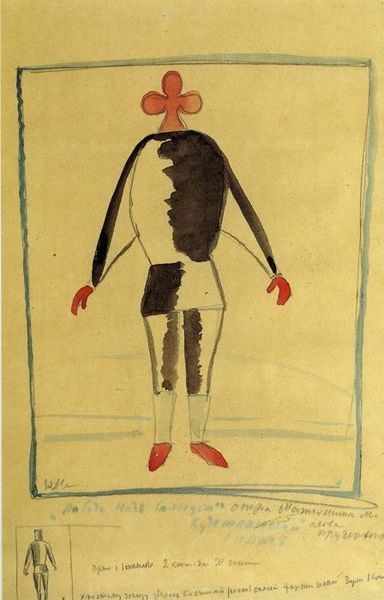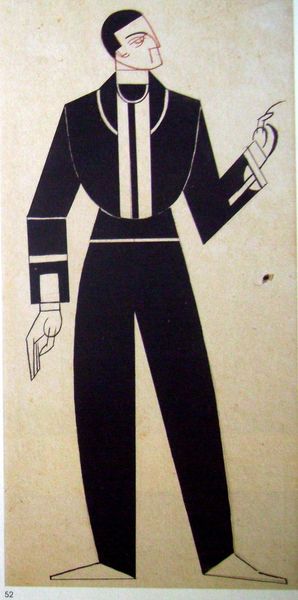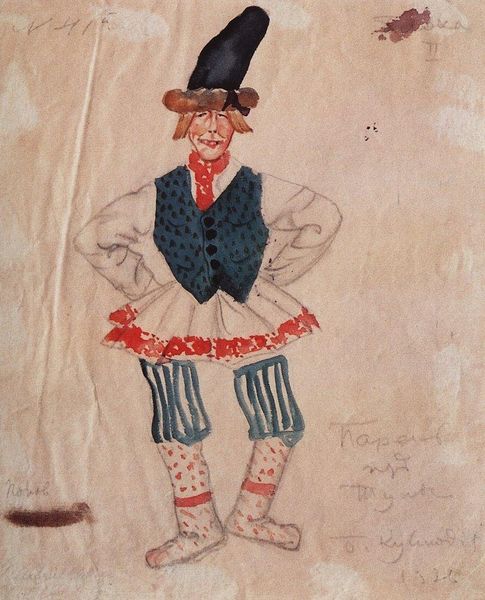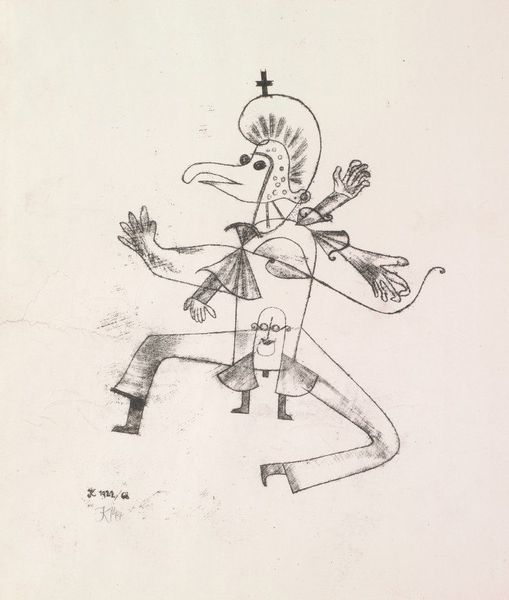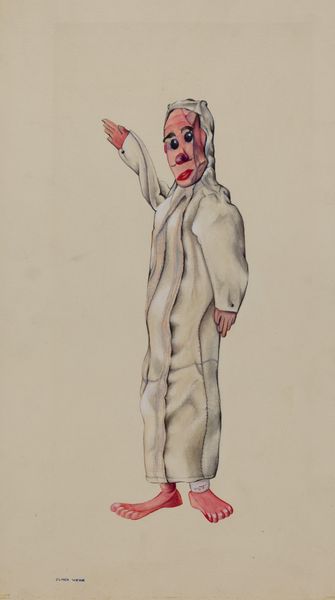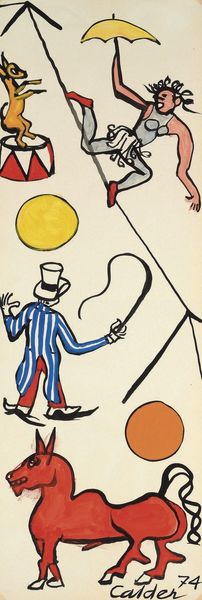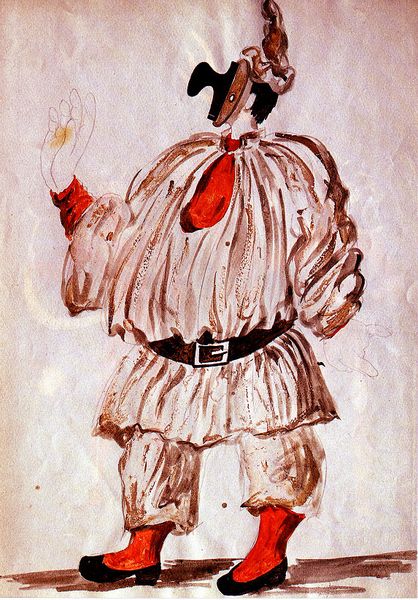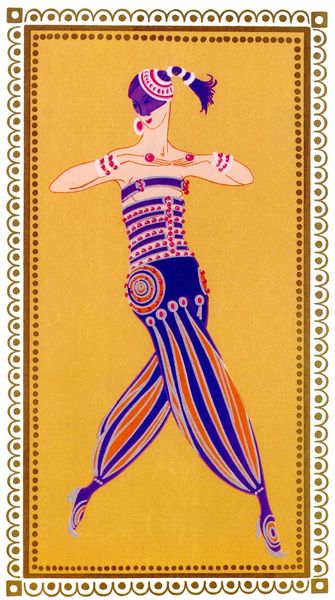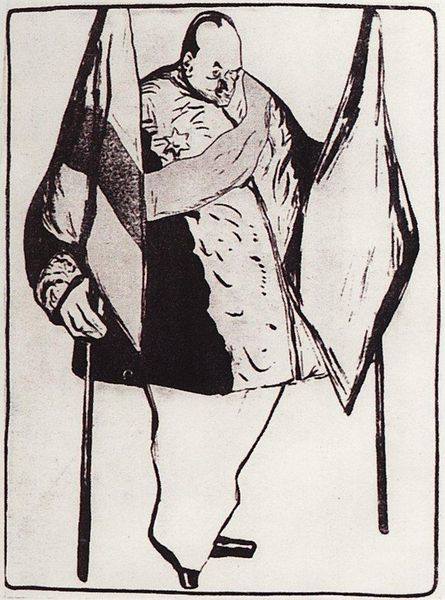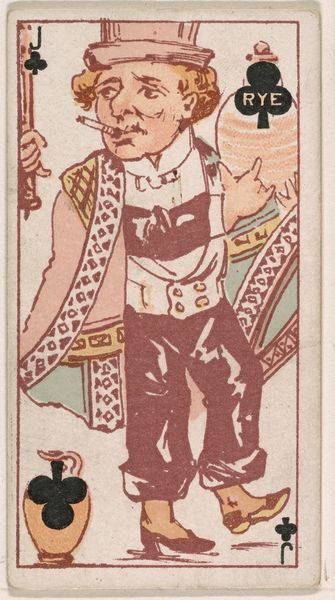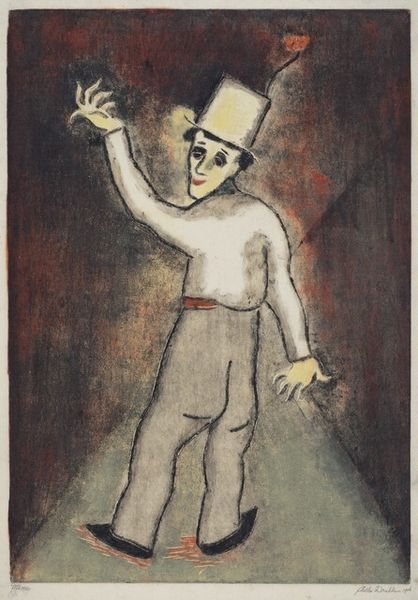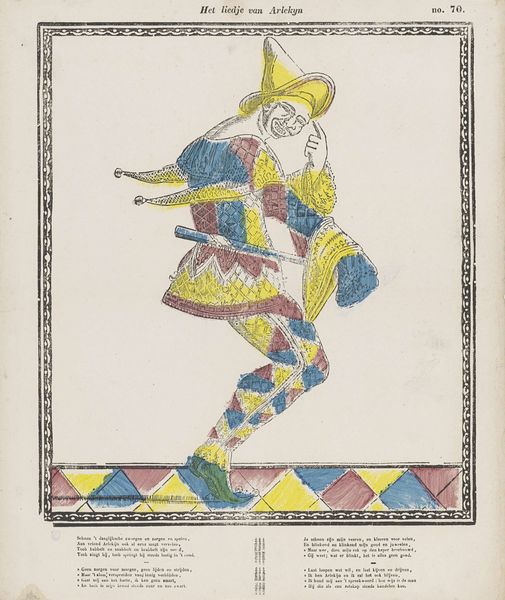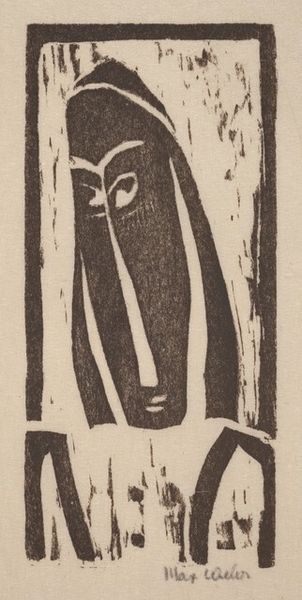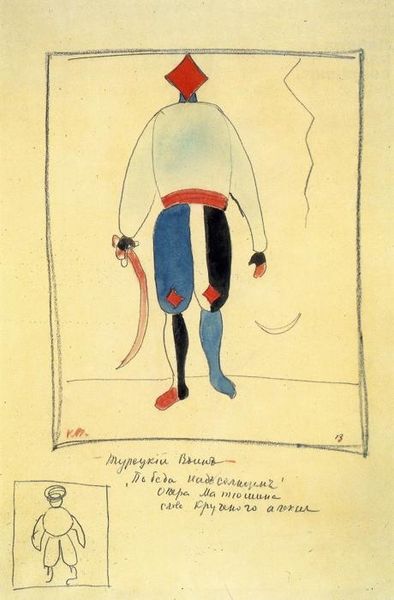
Attentive Worker 1913
0:00
0:00
kazimirmalevich
St. Petersburg State Museum of Theater and Music, Saint Petersburg, Russia
drawing, paper, ink
#
portrait
#
drawing
#
figuration
#
paper
#
ink
#
geometric
#
russian-avant-garde
#
modernism
#
futurism
Dimensions: 27 x 21 cm
Copyright: Public domain
Curator: Looking at this curious figure by Kazimir Malevich titled "Attentive Worker," created around 1913 using ink on paper, I'm struck by the sheer geometrical reduction. It almost feels like a diagram. What's your first impression? Editor: The figure seems almost assembled from distinct components—blocks and cylinders, bold red against stark black and white. The composition evokes a sense of both tension and stability, which I find rather striking, especially the head rendered as a solid shape. Curator: Indeed, this kind of reduction, where a figure is distilled to its essential geometric components, is highly characteristic of the Russian avant-garde, particularly influenced by movements like Futurism and, later, Suprematism. It suggests more than a mere portrayal of a worker. Editor: I see this move beyond representation as reflective of broader socio-political anxieties and aspirations during that era, no? Consider Russia on the cusp of revolution – art becomes a laboratory for imagining a new social order and indeed, a new type of "worker." Is Malevich suggesting the worker’s identity is now reduced to a machine? Curator: Exactly! This faceless, almost robotic form, can be seen as a symbol. The attentiveness perhaps suggests both focused labor, but also a state of constant vigilance and control during a tumultuous period. The symbolic charge of red can mean anything: the color of passion, or simply… alert. Editor: And look at the tools – simplified and functional. It reminds me that visual art in this time served not only aesthetic purposes, but also had a profound influence in agitational propaganda for a new proletarian class. Were depictions like these successful in inspiring the masses do you think? Curator: They were certainly ubiquitous! Consider also that this piece is in the St. Petersburg State Museum of Theater and Music. It could very well be a design study for theatrical costumes, pushing constructivist principles into the world. The image transcends a portrait into the sphere of practical application for political causes and dramatic presentations. Editor: So, through geometric reduction, symbolic colour, and utilitarian forms, Malevich encapsulates the promise and possible reduction of labor in a changing society. Quite fascinating. Curator: It leaves us considering the degree to which individual identity could be both represented and erased by such stark visual symbols in times of dramatic societal upheaval. Editor: Yes, a perfect embodiment of how revolutionary spirit transforms human experience into bold image and abstract form.
Comments
No comments
Be the first to comment and join the conversation on the ultimate creative platform.
